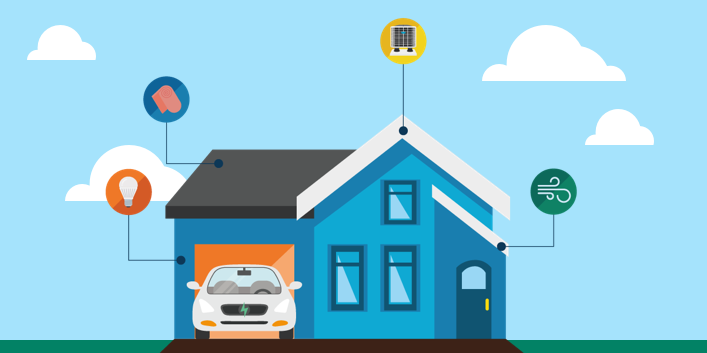As a business owner, one of the significant expenses you face is energy bills. While you cannot run a business without energy, the cost can sometimes spiral out of control. However, there are many ways to save on your energy bills without sacrificing comfort or productivity. Here are ten tips for saving money on your business energy bills.
Looking to get the best deals on business energy rates? Check out Business Energy Comparison!
1. Conduct an Energy Audit

Before you can start saving on your energy bills, you need to know where your energy is going. Conduct an energy audit to determine how much energy each area of your business consumes. The audit will reveal where you can make changes to save energy and reduce costs. You can hire an energy consultant or use online tools to conduct an energy audit.
2. Switch to Energy-Efficient Lighting
One of the easiest ways to save on your energy bills is to switch to energy-efficient lighting. LED bulbs use less energy than traditional incandescent bulbs, and they last longer. You can also install motion sensors in rooms that are not always in use, so the lights automatically turn off when no one is around.
3. Upgrade to Energy-Efficient Appliances
Old appliances are energy hogs, and they can be costly to run. If your appliances are over ten years old, consider upgrading to energy-efficient models. New appliances use less energy, and they can pay for themselves in energy savings over time.
4. Use Smart Thermostats
Heating and cooling your business can be expensive. However, you can save money by using smart thermostats. These devices learn your habits and adjust the temperature automatically to save energy when you’re not in the building. They can also be controlled remotely through your phone, so you can adjust the temperature when you’re away.
5. Reduce Phantom Load
Phantom load is the energy used by appliances and electronics even when they are turned off. This can be a significant source of energy consumption, especially in a business setting with many devices. You can reduce phantom load by unplugging devices when they are not in use or using smart power strips that turn off power to devices that are not in use.
6. Optimize Airflow
Proper airflow is essential for keeping your business comfortable and energy-efficient. Ensure that your HVAC system is working correctly, and that there are no leaks or obstructions that can reduce airflow. You can also use fans to improve circulation and reduce the need for heating and cooling.
7. Use Natural Light

Natural light is free, and it’s an excellent way to reduce your energy bills. Open blinds and curtains during the day to let in as much natural light as possible. You can also install skylights or light tubes to bring in even more natural light.
8. Implement Energy-Saving Policies
Implementing energy-saving policies can help your business reduce energy consumption and save money. Here are some additional energy-saving policies that you can implement in your workplace to further reduce your energy consumption:
- Establish a company-wide policy to turn off lights, computers, and other electronics at the end of the day. Encourage employees to unplug their devices or use power strips to cut off power to multiple devices at once.
- Use power management software to automatically shut down computers and other devices after a certain period of inactivity. This can save energy and reduce the risk of equipment failure.
- Upgrade to energy-efficient lighting, such as LED bulbs, which use up to 80% less energy than traditional incandescent bulbs. You can also install occupancy sensors that automatically turn off lights in unoccupied areas.
- Encourage employees to carpool, use public transportation, or bike to work to reduce the carbon footprint of commuting. You can also provide incentives for employees who use alternative transportation methods, such as preferential parking spots or transit passes.
- Implement a “bring your own device” policy, which allows employees to use their personal devices for work purposes. This can reduce the need for energy-hungry office equipment and reduce overall energy consumption.
- Implement a recycling program for paper, plastic, and other materials. You can also purchase recycled products and use eco-friendly cleaning supplies to further reduce your environmental impact.
- Use natural ventilation and fans instead of air conditioning whenever possible. If you must use air conditioning, ensure that filters are clean and replace them regularly to maintain efficiency.
- Consider implementing a telecommuting policy, which allows employees to work from home or another remote location. This can significantly reduce energy consumption related to commuting and office operations.
By implementing these energy-saving policies in your workplace, you can significantly reduce your energy consumption, save money, and contribute to a more sustainable future. Don’t hesitate to start implementing these policies today and encourage your employees to join you in making a positive impact on the environment.
9. Consider Renewable Energy Sources
Renewable energy sources, such as solar panels and wind turbines, can be a significant investment, but they can also save your business money in the long run. You can use these sources to generate your energy and reduce your reliance on the grid. You can also sell excess energy back to the grid to offset your energy costs.
10. Shop for the Best Energy Rates
Finally, don’t forget to shop around for the best energy rates. Energy rates can vary significantly depending on the provider, and you can save money by switching to a provider with lower rates. You can use online tools to compare rates and find the best deal for your business.
In conclusion, reducing energy bills can have a significant impact on your bottom line. By implementing these ten tips, you can save money on your energy bills without sacrificing comfort or productivity. Conducting an energy audit, upgrading to energy-efficient appliances, using smart thermostats, reducing phantom load, optimizing airflow, using natural light, implementing energy-saving policies, considering renewable energy sources, and shopping for the best energy rates are all practical steps you can take to save on your business energy bills.
